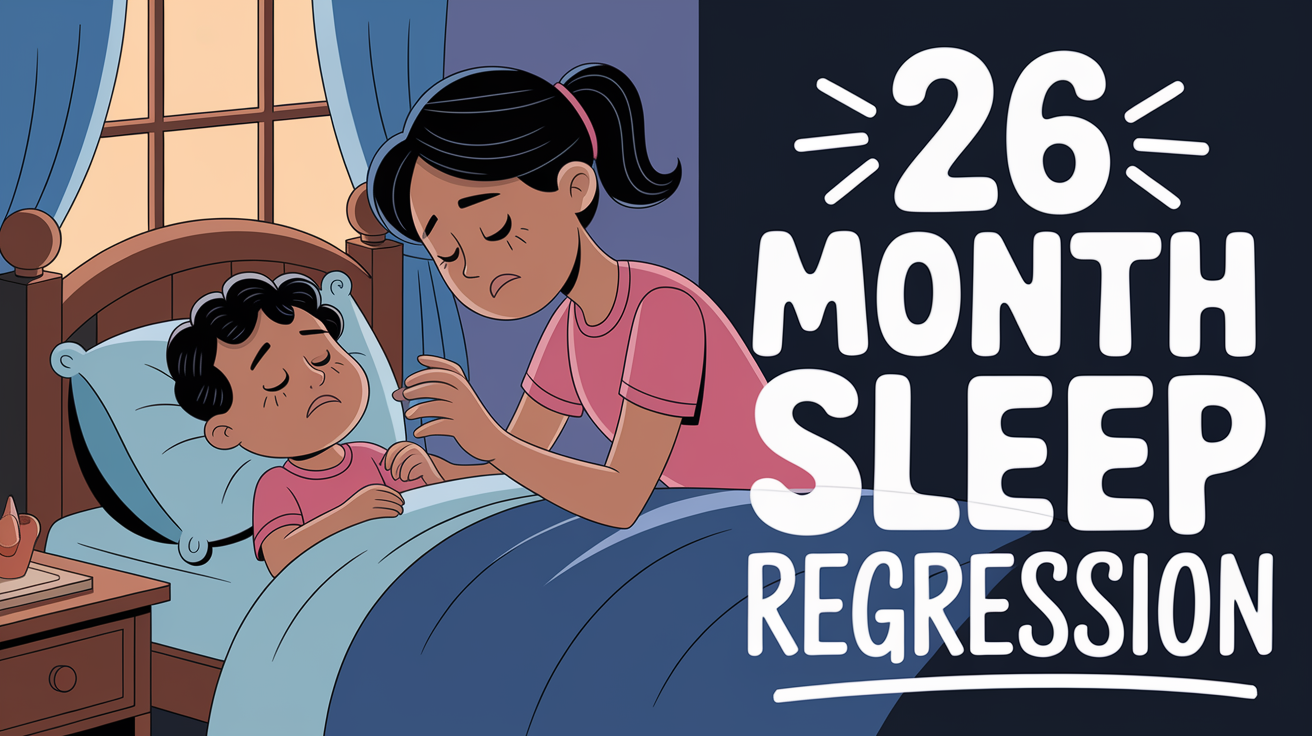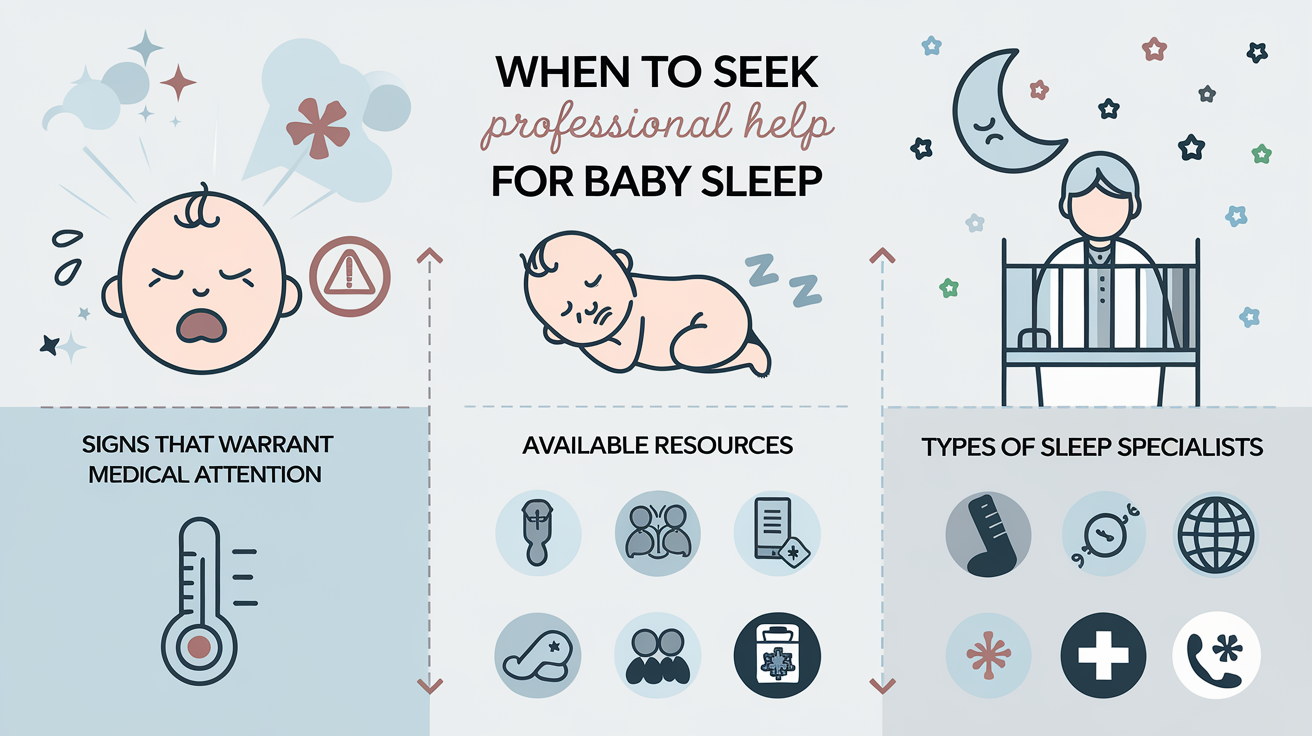
Just when you thought your baby had mastered the art of sleeping through the night, the dreaded 26-month sleep regression arrives like an uninvited guest.
One minute you’re enjoying peaceful evenings, the next you’re back to midnight wake-up calls and bedtime battles. If your formerly good sleeper is suddenly fighting bedtime like it’s their job, you’re not alone!
The 26-month sleep regression catches many parents off guard, turning sweet dreams into exhausting nightmares. But before you resign yourself to months of sleepless nights, there’s good news: this phase is both normal and temporary.
Understanding what’s happening in your toddler’s rapidly developing brain and body can help you confidently manage this challenging sleep setback.
With patience and the right approach, your family will soon return to restful nights. This, too, shall pass, even when those middle-of-the-night wake-ups feel endless.
What is the 26-Month Sleep Regression?
The 26-month sleep regression refers to a period of disrupted sleep patterns in toddlers. It happens at around two years and two months of age. The 4-month, 8-month, and 18-month sleep regressions are well-known.
However, the 26-month version is less discussed but still challenging for parents. At this age, toddlers experience significant cognitive development. They also show increased independence and growing language skills. These changes can disrupt established sleep habits.
Toddlers now have more complex imaginations. This may lead to new fears at night. Many 26-month-olds are also learning to use the potty or moving to toddler beds.
These big changes affect sleep quality. Signs include fighting bedtime, waking at night, rising early, or taking shorter naps. This phase is normal and temporary. It reflects your child’s rapid development in many areas.
Signs of the 26-Month Sleep Regression

Parents may notice several clear signs when their toddler hits the 26-month sleep regression. Bedtime often becomes a battlefield, with children suddenly fighting sleep despite previous good habits.
Many toddlers struggle to fall asleep or stay asleep throughout the night. Night-wakings typically increase, with children calling for parents multiple times after bedtime. Early morning wake-ups before 5:30 or 6:00 am have become more common.
Nap resistance might appear, with some children trying to skip naps altogether despite still needing daytime rest. Behavior changes during the day often accompany these sleep disruptions.
Toddlers may show increased irritability, emotional outbursts, clinginess, or difficulty concentrating. Some children become more demanding or stubborn during this phase.
Parents might also notice that their once-predictable toddler seems more anxious at bedtime or expresses new fears about sleeping alone. These signs typically cluster together during this regression period.
Causes of the 26-Month Sleep Regression
The 26-month sleep regression has several key triggers. Brain development creates more active thinking at bedtime. Growing independence makes toddlers resist sleep rules. Some children experience renewed separation anxiety. Physical changes like molars coming in can cause pain.
- Growing motor skills create a desire to move rather than sleep.
- New cognitive abilities introduce complex thoughts and processing.
- Understanding cause and effect sparks increased testing of boundaries.
- Heightened imagination may trigger new fears of the dark or monsters.
- Renewed separation anxiety makes sleeping alone more difficult.
- A strong desire for independence conflicts with bedtime rules.
- Molars still emerging can cause nighttime discomfort.
- Routine disruptions like travel or new siblings significantly impact sleep patterns.
How Long Does the 26-Month Sleep Regression Last?

For most children, the 26-month sleep regression typically lasts between 2 and 6 weeks. Every child is different, so some may experience it for just a few days, while others might struggle for up to two months.
The good news is that sleep regressions are temporary phases that do eventually pass. You can tell the regression is ending when you notice fewer night-wakings and less bedtime resistance. Your child may gradually return to their normal sleep patterns, though some new sleep habits might stick around.
The regression often ends once your toddler masters the new skills they’re developing or adjusts to changes in their environment. Keeping a consistent bedtime routine throughout the regression helps it resolve faster.
If sleep problems persist beyond 8 weeks, it might be worth checking with your pediatrician to rule out other issues, such as sleep apnea or chronic ear infections.
How Can Parents Manage the 26-Month Sleep Regression?
Handling the 26-month sleep regression requires patience and consistency. Keep bedtime routines the same every night to provide security.
Comfort your child when needed. Address fears directly with reassurance and night lights if helpful. Make sure the bedroom stays dark, quiet, and comfortable.
Remember that maintaining boundaries helps everyone get more rest in the long run.
-
Stick to a consistent sleep and wake-up time every day.
-
Use a visual bedtime chart and offer a comfort object.
-
Keep interactions calm, use a nightlight, and try white noise.
-
Ensure a cool room, limit screen time before bed, and stay consistent with boundaries.
When to Seek Professional Help?

Most toddlers work through sleep regressions naturally, but sometimes, more help is needed.
Talk to your doctor if your child’s sleep problems last longer than 8 weeks without improvement. Watch for loud snoring, gasping, or very restless sleep, which might signal sleep apnea.
Extreme fatigue during the day that affects your child’s ability to play and learn is another warning sign.
If your toddler seems to be in pain during sleep or has frequent night terrors that are hard to calm, medical advice is important. Children with developmental conditions like autism or sensory processing issues might need special sleep support.
Unusual sleep patterns, like sleeping much more or less than normal for their age, deserve attention. Trust your parental instinct—if something seems truly off with your child’s sleep, don’t hesitate to ask for help. Your pediatrician can refer you to a sleep specialist if needed.
Summing It Up
The 26-month sleep regression may feel like an endless midnight marathon, but remember that this challenging phase is temporary. Your toddler isn’t trying to test your patience—they’re simply growing, learning, and changing at an incredible pace.
By maintaining consistent routines, offering comfort while preserving boundaries, and creating a sleep-friendly environment, you’ll help your baby move through this regression more smoothly.
Most importantly, take care of yourself during this demanding time. Tag-team with a partner if possible, accept help from friends or family, and remember that sometimes “good enough” parenting is exactly what’s needed.
The 26-month sleep regression will pass, and both you and your toddler will emerge on the other side with new skills and resilience. Sweet dreams are just around the corner again.
If you’re interested in more informational content on mothers and babies, feel free to click here and explore other blogs that you might enjoy.
